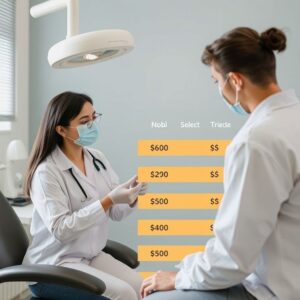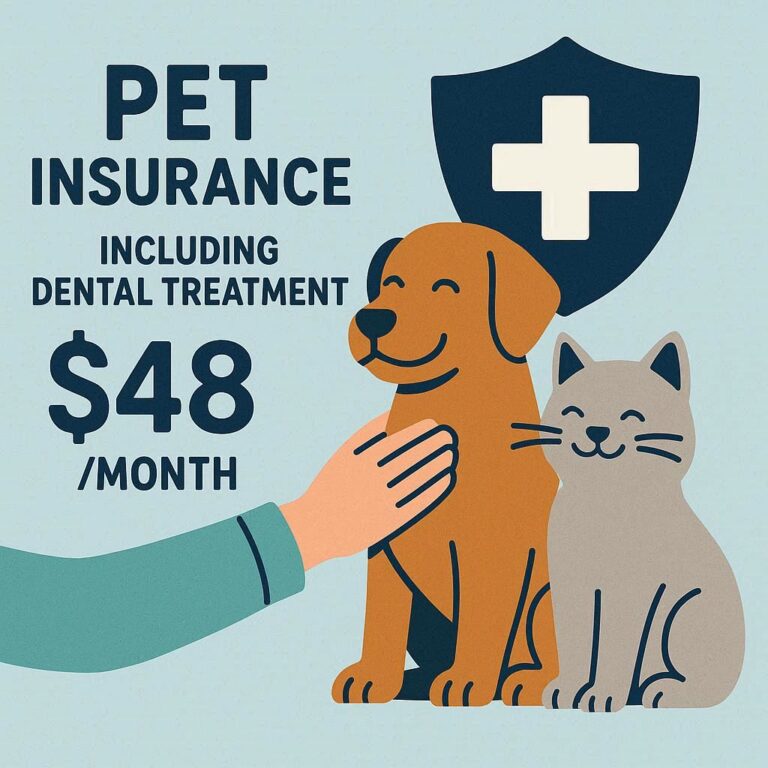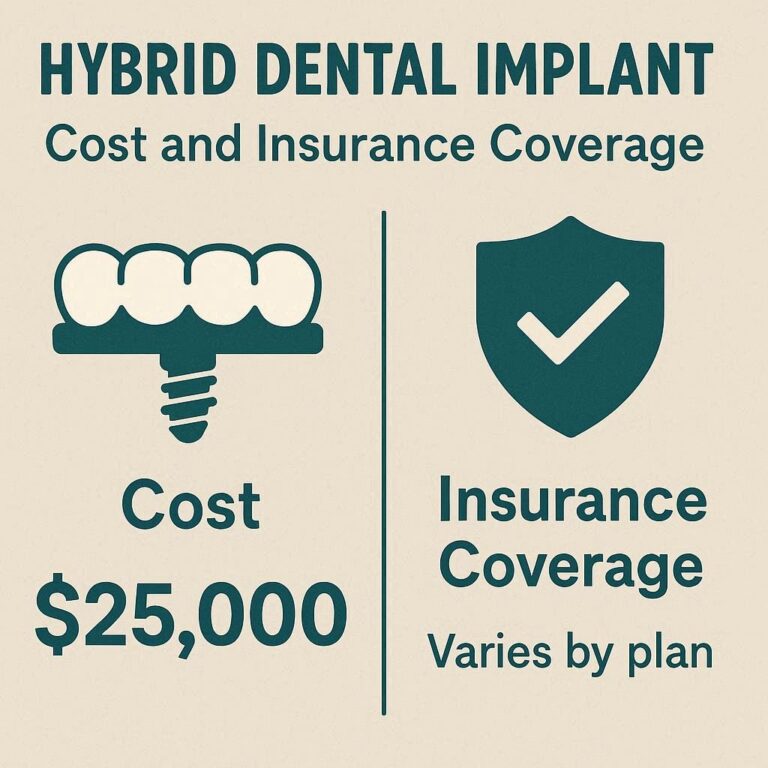dental consultation costs without insurance
The sharp, persistent throb of a toothache is a universal signal of distress. It’s a pain that demands attention, cutting through the noise of daily life with an urgency that is impossible to ignore. For millions of Americans without dental insurance, this physical pain is immediately accompanied by a wave of financial anxiety. The first, crucial step toward relief—scheduling a dental consultation—becomes a source of stress, shrouded in the mystery of an unknown and potentially daunting cost. How much will it simply cost to have a professional look? This question, seemingly simple, opens the door to a complex and often confusing financial landscape.
This article is designed to be your definitive guide through that landscape. We will move beyond vague estimates and provide a detailed, transparent exploration of what you can expect to pay for a dental consultation without insurance. But we will go much further. We will deconstruct the consultation itself, explaining why it costs what it does and what value each component provides. We will arm you with practical, actionable strategies to access affordable care, from dental savings plans to university clinics. We will delve into the regional cost variations and provide a clear-eyed look at the potential financial consequences of postponing care. Our mission is to replace your anxiety with empowerment, transforming you from a passive patient fearing a bill into an informed consumer making strategic decisions about your oral and financial health. The journey to a healthier smile, even without an insurance card, begins with knowledge.

Chapter 1: Deconstructing the Dental Consultation – More Than Just a Look
A common misconception is that a dental “check-up” is a quick, cursory glance in the mouth. In reality, a comprehensive dental consultation is a multi-faceted diagnostic process. Understanding its components is the first step to understanding its cost.
The Core Components: Examination, Diagnosis, and Conversation
A standard new-patient or periodic consultation is built on three pillars:
-
Comprehensive Oral Examination: This is far more than checking for cavities. The dentist will perform a thorough assessment of your entire oral ecosystem. This includes:
-
Soft Tissue Examination: Checking the lips, cheeks, tongue, palate, and floor of the mouth for any signs of oral cancer, infections, or other pathologies. This is a critical, life-saving aspect of the exam.
-
Dental Hard Tissue Examination: Evaluating each tooth for decay (caries), fractures, wear (attrition, abrasion, erosion), and existing restorations (fillings, crowns) to assess their integrity.
-
Occlusal Analysis: Examining how your teeth come together when you bite, looking for issues like malocclusion or bruxism (teeth grinding) which can cause long-term damage.
-
Temporomandibular Joint (TMJ) Assessment: Palpating the jaw joints and muscles to identify any dysfunction, pain, or clicking that may indicate a disorder.
-
-
Diagnostic Imaging (Radiographs/X-rays): The human eye can only see the surfaces of the teeth and gums. X-rays provide a vital subsurface view. A typical “check-up” may include a set of bitewing X-rays (usually 2-4 films) to visualize the areas between back teeth where cavities often start. For a new patient, a full-mouth series (typically 18-20 films) or a Panoramic X-ray (a single, broad view of the entire jaw, teeth, and sinuses) may be recommended to establish a baseline and identify hidden issues like impacted teeth, abscesses, or bone loss.
-
Periodontal Evaluation: The health of the structures supporting your teeth—the gums and bone—is paramount. Using a periodontal probe, the dentist or hygienist will measure the depth of the space between your teeth and gums. Deeper pockets (typically over 3mm) can indicate gingivitis (reversible gum inflammation) or periodontitis (irreversible bone loss), which requires specific treatment.
The Diagnostic Triad: Visual Examination, Radiographs, and Periodontal Probing
These three elements form a diagnostic triad. The visual exam may spot a suspicious spot, which the X-ray confirms as a cavity extending deep into the tooth. The periodontal probing may reveal isolated deep pockets that explain why one tooth is sensitive. It is this synthesis of information that allows the dentist to form an accurate diagnosis and create a tailored treatment plan. You are not paying for a “look”; you are paying for a systematic, professional investigation into the state of your oral health.
Chapter 2: The National Price Tag – A Spectrum of Consultation Costs
So, what does this investigative process cost? There is no single answer, but we can establish a clear range based on national data, practitioner surveys, and regional billing guides.
The Baseline: Routine Check-up and Cleaning Costs
For an established patient, a “recall” or “periodic” visit often bundles the examination with a professional prophylaxis (cleaning). For an uninsured patient, this bundled cost can range from $125 to $350+. For a new patient consultation, which is typically more extensive and often includes a more thorough examination and a full set of X-rays, the cost can range from $150 to $450+.
It is crucial to understand that these fees are often “à la carte.” A dental practice may charge separate fees for:
-
Comprehensive Oral Examination (D0150): $75 – $150
-
Periodic Oral Examination (D0120): $50 – $100
-
Bitewing X-rays (4 films) (D0274): $75 – $150
-
Full-Mouth Series (D0210): $125 – $300
-
Panoramic Film (D0330): $100 – $200
-
Prophylaxis (Adult Cleaning) (D1110): $100 – $200
When itemized, the total for a new patient can quickly land in the range mentioned above.
The Specialist Premium: Periodontists, Endodontists, and Orthodontists
If your general dentist identifies a complex issue, you may be referred to a specialist. Their consultation fees are higher, reflecting their advanced training and the complexity of the cases they handle.
-
Endodontist (Root Canal Specialist): Consultation can range from $100 – $300. This fee is often applied to the cost of the subsequent root canal treatment if you proceed.
-
Periodontist (Gum Specialist): Initial consultation, which includes a comprehensive periodontal charting, can range from $150 – $400.
-
Orthodontist (Braces Specialist): Consultations for braces or clear aligners are often free or low-cost ($25 – $100) as a patient acquisition strategy, but the detailed diagnostic records (X-rays, photos, models) needed to formulate a treatment plan can cost $200 – $500.
Geographic Disparity: How Your Zip Code Dictates Your Bill
The cost of living and operating a business varies dramatically across the United States, and dental fees reflect this. A consultation in a major metropolitan area like Manhattan, San Francisco, or Boston will be at the highest end of the spectrum. Overhead costs—rent, staff salaries, insurance—are significantly greater there. In contrast, a practice in a rural area of the Midwest or the South will typically have lower fees. It is not uncommon for the same set of procedures to cost 30-50% more in a high-cost urban center compared to a lower-cost region.
Chapter 3: The Anatomy of a Dental Bill – Understanding the Line Items
To demystify the final number on your invoice, it’s helpful to understand what you are actually paying for.
Practice Overhead: The Hidden Engine of Cost
Running a dental practice is an expensive endeavor. The fee for your consultation must cover a portion of the practice’s total overhead, which includes:
-
Staff Salaries: Hygienists, dental assistants, receptionists, and office managers.
-
Rent or Mortgage: For the physical practice space.
-
Equipment: Purchasing and maintaining the dental chair, X-ray unit, autoclave (sterilizer), and handpieces (“drills”). A single new dental chair can cost over $10,000.
-
Supplies: Gloves, masks, disinfectants, anesthetics, fluoride, and other consumables.
-
Malpractice Insurance: A significant annual expense for all healthcare providers.
-
Utilities and Administrative Costs: Electricity, water, internet, software for scheduling and billing.
The Dentist’s Expertise: Why Experience and Qualifications Matter
You are also paying for the dentist’s knowledge, skill, and experience. A dentist who has invested in thousands of hours of continuing education on complex restorative work or oral pathology can identify subtleties that a less experienced practitioner might miss. This expertise provides immense value in the form of an accurate early diagnosis, which can prevent costly and painful problems down the line. While a dentist with a higher fee may seem more expensive, their diagnostic acumen could save you thousands in unnecessary or incorrect treatment.
The Technology Factor: Digital vs. Traditional X-Rays and Other Advanced Tools
Many practices have invested in advanced technology that improves diagnostic capabilities and patient comfort, and these investments are reflected in their fees.
-
Digital X-rays: Offer lower radiation exposure, instant results, and the ability to enhance images for better diagnosis. The sensors and software are costly, leading to a slightly higher fee compared to traditional film X-rays.
-
Intraoral Cameras: Tiny cameras that allow you to see inside your own mouth on a screen, helping you understand the dentist’s findings.
-
Cone Beam CT (CBCT) Scans: Provide 3D imaging for complex implant placement, root canal, or oral surgery planning. A CBCT scan for a consultation, if needed, can add $200 – $600 to the cost.
(Image: A side-by-side comparison of a traditional film X-ray and a crisp, clear digital X-ray on a monitor.)
Chapter 4: Proactive Pathways – Strategies to Manage and Reduce Costs
Facing a high dental bill without insurance can be intimidating, but it is not insurmountable. Numerous strategies and resources exist to make care more affordable.
Dental Savings Plans: An Affordable Alternative to Insurance
Dental savings plans (or dental discount plans) are not insurance. Instead, you pay an annual membership fee (typically $80 – $200 for an individual) to gain access to a network of dentists who have agreed to provide services at a discounted rate. These discounts can range from 10% to 60% off the standard fees. For example, a $250 consultation might be reduced to $150 for a plan member. This is an excellent option for individuals without insurance who need basic and preventive care.
Dental School Clinics: High-Quality Care at a Fraction of the Price
Dental schools need patients for their students to train on. Care is provided by dental students who are closely supervised by licensed, experienced faculty dentists. The trade-off is that appointments take significantly longer, but the cost savings are substantial—often 30% to 50% less than private practice fees. The quality of care is typically very high because every step is checked and approved by an expert.
Federally Qualified Health Centers (FQHCs) and Community Clinics
These community-based health centers provide comprehensive care, including dental services, on a sliding fee scale based on your income and family size. They are a vital safety net for low-income individuals and families. You can find a local FQHC through the Health Resources and Services Administration (HRSA) website.
Negotiating Fees and Payment Plans: It Never Hurts to Ask
Many people do not realize that dental fees can sometimes be negotiated, especially for costly planned treatment. Be proactive and transparent.
-
Ask for a Discount for Payment in Full: If you require a large treatment plan (e.g., a crown for $1,500), ask if the practice offers a discount (e.g., 5-10%) if you pay the entire amount upfront with cash or a debit card.
-
Inquire About In-House Payment Plans: Many practices offer interest-free or low-interest payment plans that allow you to spread the cost over several months. This is often managed through a third-party healthcare financier like CareCredit.
-
Get a Pre-Treatment Estimate: Always ask for a detailed, written treatment plan with all associated costs before agreeing to any procedure. This allows you to shop around or budget accordingly.
Chapter 5: Beyond the Consultation – Budgeting for Potential Treatment Costs
The consultation is the starting line, not the finish line. Its purpose is to identify what, if any, treatment is needed. Being financially prepared for common procedures is a critical part of managing your oral health without insurance.
Common Procedures and Their Associated Costs
The consultation might reveal the need for:
-
Simple Tooth Extraction: $150 – $400
-
Silver Amalgam Filling (One surface): $110 – $270
-
Tooth-Colored Composite Filling (One surface): $135 – $325
-
Root Canal (Molar): $1,000 – $1,800
-
Dental Crown (Porcelain-fused-to-metal): $1,000 – $1,800
-
Dental Implant (including crown): $3,000 – $6,000
The High Cost of Delay: How Skipping the Consultation Leads to Pricier Problems
The single most expensive dental strategy is avoidance. A small cavity that could be fixed with a $200 filling, if ignored, can turn into a root canal and crown costing over $2,500. A minor gum inflammation (gingivitis) that is reversible with a professional cleaning can progress to periodontitis, requiring deep cleanings (scaling and root planing) costing $500 – $1,500 per quadrant, and potentially leading to tooth loss. The initial consultation fee is a small, strategic investment in preventing catastrophic future expenses and preserving your natural teeth.
Chapter 6: A Comparative Analysis: Table of Common Dental Procedure Costs (Uninsured)
This table provides a visual breakdown of the potential financial journey from diagnosis to treatment, underscoring the value of early intervention.
| Procedure / Service | Low-End Estimated Cost | High-End Estimated Cost | Notes / Rationale for Cost Range |
|---|---|---|---|
| New Patient Consultation (Exam & X-rays) | $150 | $450 | More extensive for new patients; includes baseline records. |
| Routine Cleaning (Prophylaxis) | $100 | $200 | Assumes healthy gums. Higher in high-cost-of-living areas. |
| Simple Tooth Extraction | $150 | $400 | Complexity and tooth position (e.g., wisdom teeth) increase cost. |
| Composite Filling (One Surface) | $135 | $325 | Location and size of the cavity affect the price. |
| Root Canal (Molar) | $1,000 | $1,800 | Molars are more complex. Performed by a general dentist. |
| Dental Crown (PFM) | $1,000 | $1,800 | Material (e.g., all-ceramic, gold) significantly impacts cost. |
| Periodontal Deep Cleaning (Per Quadrant) | $500 | $1,500 | Required for gum disease. Typically done in two appointments. |
| Dental Implant (Single Tooth) | $3,000 | $6,000 | Includes implant post, abutment, and crown. Bone graft may be extra. |
Table: Nationwide Estimated Cost Ranges for Common Dental Procedures without Insurance. (Source: Compiled from FAIR Health, ADA, and industry surveys).
Conclusion: Empowering Your Dental Health Journey
Navigating dental care costs without insurance requires shifting from a reactive to a proactive mindset, where the consultation is a valuable diagnostic tool, not a financial barrier. By understanding the components of the consultation fee and the vast array of affordable care options available, you can take control of your oral health. Investing in preventive care and early diagnosis is the most powerful financial strategy, saving you from the physical pain and financial burden of complex emergency treatments. Your smile is a lifelong asset; managing its care with knowledge and strategy ensures it remains healthy and vibrant for years to come.
Frequently Asked Questions (FAQs)
1. Can I just walk into a dental office and get a price for a consultation?
Yes, you absolutely can and should. Call ahead or, if you’re nearby, walk in and ask the front desk for a fee schedule for a new patient examination and necessary X-rays. Most practices are transparent about their baseline fees.
2. What is the difference between a “limited” and a “comprehensive” exam?
A limited exam focuses on a specific problem (e.g., “My tooth hurts here”). A comprehensive exam is a full “head-to-neck” assessment of your entire oral health, including oral cancer screening, and is standard for a new patient. It is more expensive but far more valuable.
3. Are there any low-cost options for emergency dental pain?
Yes. For severe pain or swelling, which constitutes a dental emergency, you can visit a dental school emergency clinic, a community health center (FQHC), or a hospital emergency room. Note that the ER can only provide antibiotics and pain medication for an infection; they cannot perform the necessary dental procedure (like an extraction) to solve the problem.
4. Is it cheaper to go to a corporate dental chain or a private practice?
It varies. Corporate chains may run specials for new patients that make the initial consultation very affordable. Private practices may have more flexibility to offer personalized payment plans. It’s best to get quotes from both types in your area.
5. How can I verify that the treatment plan I’m given is necessary and fairly priced?
It is perfectly acceptable and wise to seek a second opinion, especially for major procedures like root canals or crowns. Take your X-rays (you have a right to them) to another dentist for an independent assessment of the diagnosis and proposed treatment cost.
Additional Resources
-
Find a Dental School: American Dental Education Association (ADEA) – https://www.adea.org/ (Check their directory for accredited dental schools near you).
-
Find a Federally Qualified Health Center (FQHC): Health Resources & Services Administration (HRSA) – https://findahealthcenter.hrsa.gov/
-
Compare Dental Savings Plans: Websites like DentalPlans.com allow you to compare different plans and see participating dentists in your zip code.
-
Dental Procedure Code Information: The American Dental Association (ADA) website provides information on dental procedure codes (CDT codes) which can help you understand the line items on your bill.
-
Non-Profit Assistance: Organizations like Dental Lifeline Network (https://dentallifeline.org/) provide access to care for certain qualifying individuals (e.g., elderly, disabled, medically fragile).
Date: September 30, 2025
Author: The Health Economics Team
Disclaimer: The information provided in this article is for educational and informational purposes only and does not constitute professional medical or financial advice. Dental procedure costs are highly variable and depend on geographic location, practice overhead, and individual patient needs. Readers are strongly encouraged to consult directly with dental practices for precise quotations and to discuss payment options.


